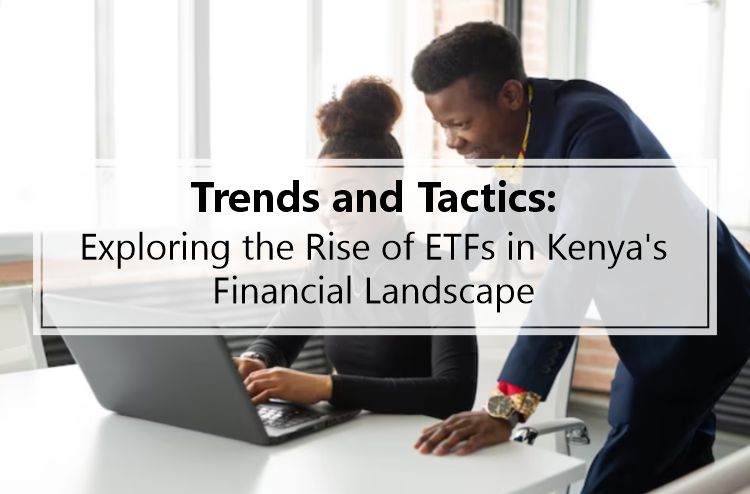An exchange-traded fund (ETF) is a pooled investment security that can be bought and sold in a manner similar to an individual stock. An ETF and a mutual fund have a key distinction. While a mutual fund is also a pooled investment, it only trades once a day after the market closes.
An ETF has the ability to track a wide range of assets, from the value of a single commodity to a diverse portfolio of securities. ETFs can be tailored to follow particular investment strategies.
Let’s look at the financial landscape of ETFs in Kenya.
Why should you invest in ETFs?
If you’re interested in investing in stocks but find it challenging to dedicate the time and resources to thoroughly researching and selecting the most suitable ones for your portfolio, ETFs can provide a valuable solution.
ETFs provide a convenient way to engage in the stock market, offering advantages over investing in individual stocks. They offer a diverse selection of investment options at a more cost-effective rate compared to investing directly in individual stocks.
ETF market
In the financial landscape of Kenya, there are various types of ETFs to invest in. It can be used for speculation and price increases, income generation, and to hedge or partly offset risk in an investor’s portfolio. Let’s look at a brief description of the ETFs available on the market.
Passive and active ETFs
ETFs can be passive or active. Passive ETFs try to match the performance of a broader index like the S&P 500 or a specific industry or trend. Rather than tracking an index, actively managed ETFs allow portfolio managers to choose which securities to hold. These funds are more expensive than passive ETFs.
Bond ETFs
Investors receive monthly income from bond ETFs. Bond performance determines their revenue distribution. Municipal bonds—government, corporate, state, and local—may be included. Bond ETFs have no maturity date. They usually trade above or below the bond price.
Stock ETFs
Stock ETFs track a single industry or sector with a basket of equities. A stock ETF may track auto or international stocks. High performers and new entrants with growth potential are included to provide varied exposure to a single industry.
Industry or sector ETFs
Industry- or sector-specific ETFs target a certain industry. An energy ETF includes energy firms. By monitoring industry companies, industry ETFs provide exposure to that industry.
Commodity ETFs
Commodity ETFs invest in crude oil and gold. Commodity ETFs diversify portfolios, making market downturns easier to hedge. Commodity ETFs help buffer stock market drops. Holding commodity ETF shares is cheaper than owning the commodity. The former avoids commodity ownership, insurance, and storage fees.
Currency ETFs
Currency ETFs track domestic and foreign currency pairs. Political and economic trends in a country can be utilized to speculate on currency prices. Importers and exporters use them to diversify portfolios or hedge FX market volatility. Some are used as inflation hedges.
Inverse ETFs
Shorting stocks helps inverse ETFs profit from stock falls. Shorting is borrowing a stock, selling it, and waiting for a price drop to buy it back. Inverse ETFs short stocks with derivatives. They bet on a market fall. When the market falls, inverse ETFs rise proportionally. Inverse ETFs are often ETNs, not ETFs. ETNs are bank-backed bonds that trade like stocks. Consult your broker to see if an ETN fits your portfolio.
Leveraged ETFs
Leveraged ETFs aim to provide returns that are 2x or 3x the return of the underlying investments. For example, a 2× leveraged S&P 500 ETF returns 2% when the index gains 1% and loses 2% when the index declines 1%. These products leverage returns with loans and derivatives like options and futures contracts. Leveraged inverse ETFs target inversely multiplied returns.
Investing in ETFs in Kenya provides an affordable opportunity to access a diverse range of securities, even with a limited budget. You have the flexibility to construct a portfolio that includes a variety of ETFs or focuses solely on them.


